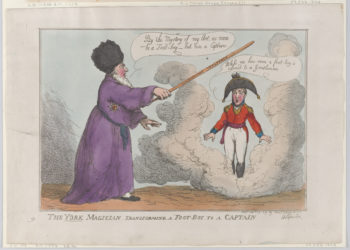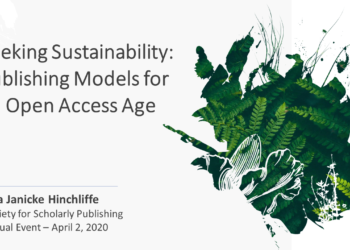In discussing transformative agreements, the focus is typically on how they enable open access publishing. This focus is not surprising given transformative agreements were devised for this purpose. But, in many cases, transformative agreements are also expanding access and readership for content that is paywalled. This essay explores this hidden benefit of the “big deal” nature of transformative agreements.

Transformative agreements, which are also known as read-and-publish agreements, are a mechanism to shift library dollars spent from subscriptions to read paywalled content towards open access publishing services. We are in a time of a great deal of experimentation with transformative agreements and, as such, there are almost always exceptions to any general statements. However, broadly speaking, in such agreements the payment from the library to the publisher bundles reading and publishing together into a single contract. The relative proportions of the payments for reading and publishing vary greatly across the universe of transformative agreements, including those in which reading access is not charged separately but subsumed into the publishing charge. In such instances, the contracts are sometimes then known as publish-and-read agreements.
Understandably, the preponderance of the analysis of transformative agreements has focused on how they support the growth of open access publishing. Headlines such as Celebrating 30,000 Open Access Articles, Libraries’ New Agreements Offer Researchers Options for Open Access Publishing and Read and Publish Deals ‘Drive Increase in OA Research Content’ illustrate this emphasis.
And, it is true that transformative agreements deliver on the open access publishing promise. They are successful instruments for driving open access publishing. Institutions and even entire countries are able to achieve the goal of making almost all research and scholarship published with a given publisher open access through such contracts. For example, countries with national level transformative agreements with Springer Nature see upwards of 90% of their works published open access.
What has not made headlines, but is also a noteworthy outcome of transformative agreements, is the significant increase in access to paywalled content that they facilitate. This is important because, though there are a growing number of articles that are published open access, there are also many articles that are published behind a paywall. This is true both historically and, one anticipates, for the foreseeable future. An under-appreciated feature of transformative agreements is that they increase access and readership for these paywalled articles.
Like the “big deal” agreements in the early 2000s in which publishers “bundled” their journal titles into packages and libraries then licensed “electronic access to all of a commercial publisher’s journals for a price based on current payments to that publisher, plus some increment,” transformative agreements also bundle titles – but for both reading and publishing. As a result, transformative agreements are often a “bigger big deal.”
In some cases, the “bigger big deal” is an extension of a “big deal” – with publishing services added to an already existing bundled subscription package. Libraries often seek a cost-neutral extension of their subscription spend to cover the publication services in a transformative agreement. And, they have been somewhat successful in at least getting parity to the overall institutional spend of subscriptions plus “APCs in the Wild,” those one-off APC payments made for open access publishing outside of funding programs managed by the library or other campus units. When publishing services are added to an already bundled “big deal” of journals, there is no increased access to subscription content. Such cases of no increase in access to subscription content may be, however, less common than one might think.
In practice, a library with a “big deal” may not have a comprehensive subscription to the journals from a given publisher but rather a bundled sub-set, also called a custom bundle. Or, a consortium of libraries may have an agreement for a “big deal” and then individual libraries select from the larger title list to create a sub-set of titles for a given institution. In either instance, the move to a “bigger deal” transformative agreement expands entitled reading access to paywalled content beyond what was available in the sub-set or custom bundle.
Three examples will help illustrate these dynamics:
- The Springer Nature/University of California transformative open access publishing agreement “also provides UC students, faculty and researchers with access to over 1,000 journals to which UC did not previously subscribe.”
- The Cambridge University Press/OhioLINK read and publish deal provides “access to current articles published in all 400+ journals published by Cambridge University Press.” It replaces a previous custom subscription to the “most needed” titles, according to Amy Pawlowski, Executive Director, OhioLINK, and adds about 220 titles to the consortium package. Some institutions previously had their own subscriptions supplementing the consortium custom package as well. With the new read and publish deal, Pawlowski continued, “every library in OhioLINK gained reading access to at least some titles and some gained more than 200.”
- The Wiley/Projekt DEAL agreement expanded reading access and that access has been well-utilized. According to the recently published Monitoring the Transition to Open Access: The 2019-2020 Projekt Deal – Wiley Transformative Agreement Report, “2018 to 2020 usage of articles behind the subscription paywall increased by 44%; this increase can be attributed to previously unmet demand on behalf of readers of institutions that had not subscribed to the journal content comprised in the agreement.”
Such expansion of reading access is not limited to large scale agreements alone. For example, the Read-and-Publish program offered by The Company of Biologists provides for: “unlimited access to our three subscription journals – Development, Journal of Cell Science and Journal of Experimental Biology – including the full archive dating back to 1853.” The “pricing for Read & Publish agreements is calculated on the basis of current subscription spend plus the annual average APC spend (if any) over the last three years.” As such, for those libraries that did not previously subscribe to all three titles, there is automatically expanded access to paywalled content for their readers when taking up the transformative offering.
The benefits for libraries and their readers of expanded reading access is not difficult to see, though libraries may be concerned about further lock-in with, and privileging of, legacy publishers with paywalled backfiles and hybrid journal offerings. For publishers offering subscription content, there is minimal cost to expanding reading access to additional titles for existing subscribers. The content is already being published, entitlements infrastructures are already in place, and setting the toggle on each title to allow rather than deny for an institution is relatively easy to do. Libraries that are not already subscribing to the content are unlikely to add subscriptions to these paywalled titles and so there is little risk that this strategy cannibalizes potential revenue.
Leveraging their paywalled content in order to incentivize contracts for open access publishing is a smart publisher strategy. Authors are more likely to submit to a journal they have access to. And, when these transformative agreements eventually give way to pure publish agreements, as the hybrid journals at some point flip to pure open access, those publishers that have transformative agreements in place with a given institution will be well-situated to strike pure publish agreements with those same institutions.
Discussion
2 Thoughts on "Expanded Access to Paywalled Content: A Hidden Benefit of Transformative Agreements"



